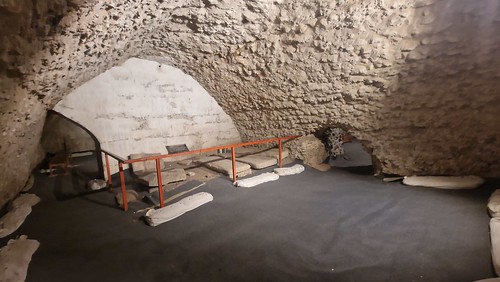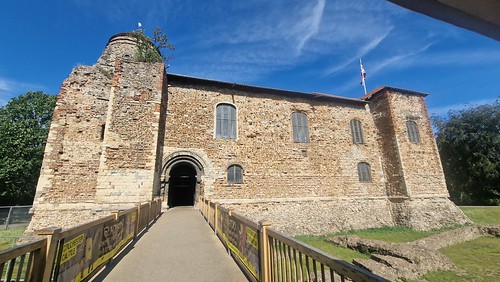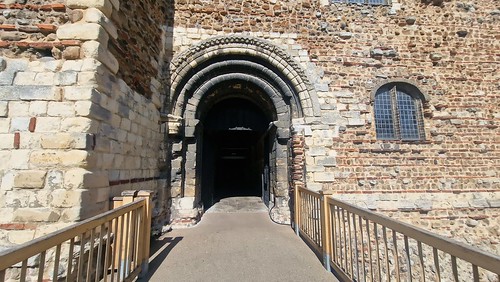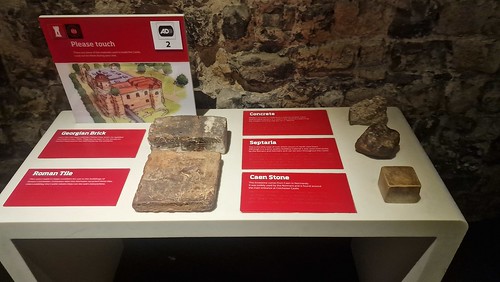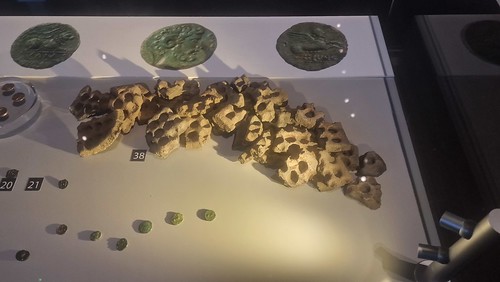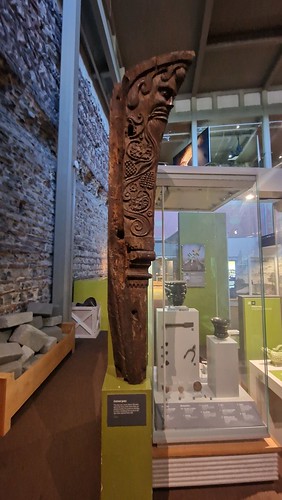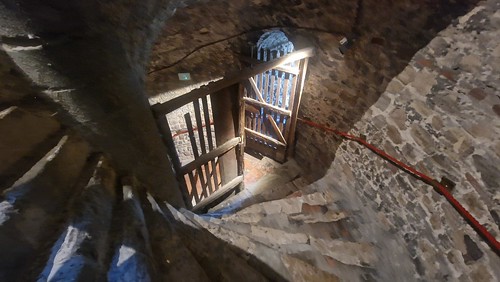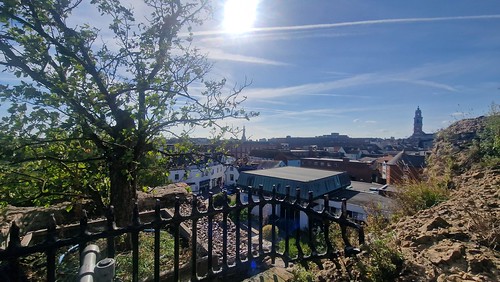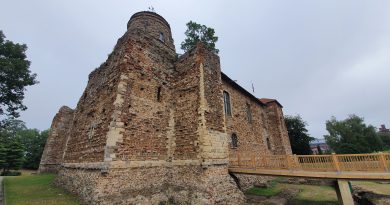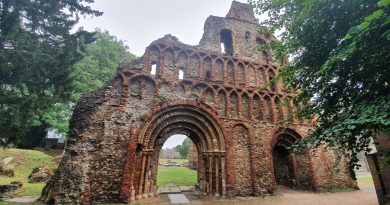Colchester – Colchester Castle and Cellar/Rooftop Tour
I’ve been to Colchester many times before, but I’ve never quite managed to visit the castle. I’ve had a trial National Art Pass which gave free entry, meaning this was a perfect time to visit before it expired. The usual adult entry cost for the castle is £12.50 and being honest, this felt a little too steep given that the tour is an extra charge.
The Norman doorway. As a brief history of the castle, it is built on the site of a Roman temple which had fallen into a state of disrepair during the Dark Ages. King William I ordered the construction of the castle in 1074 to help protect his new kingdom and it lasted in that state until it was purchased by John Wheely in 1683 who had a plan to pull it down. He took down the top floor, but felt that the whole project was too much and he abandoned it, so the castle was saved. It then became used as prison but was purchased by the town in 1920 and then turned into a museum. There’s plenty of evidence in the structure of its Roman foundations as much of the material was reused in the castle’s construction.
The well and I was fortunate to have a child demanding coins from his parents to throw into it which meant that I could see how deep the water was. Behind the well are the steps down the cellars which I went down later on during a tour.
When I entered the staff member offered a comprehensive introduction to the castle which all seemed suitably welcoming. She mentioned that I could indeed have free entry with my National Art Pass but asked if I would like to go on a paid tour of the cellars and the rooftop. As this was £3.85 I thought I’d go for that. The museum itself took around 50 minutes to look around, which worked perfectly for my tour which started an hour after I entered.
A model of how it is thought that the castle looked in May 1157, when King Henry II stayed for a week.
Different types of stone that were used in the castle’s construction.
The Sheepen Cauldron which was buried as a religious act at Sheepen, near to Colchester, in around 1275-1140BC. The sign at the museum notes that this is the earliest known bronze cauldron in England and is also the first known example of sheet metal being used to create a working object as opposed to a decorative item.
These are coin moulds from Cunobelin’s mint at Sheepen.
This is the tombstone of Longinus who was born in what is now Bulgaria and at the age of 25 he joined the First Thracian Cavalry regiment. He was sent to fight in Colchester and he died at the age of around 40 in the town in 55AD. As was the Roman tradition, he was buried by the side of the road leading to London and this tombstone was established by his family.
A 2010 Colchester Beer Festival glass was on display as it had imagery of Boudicca on, the woman who ransacked Colchester.
I’m fascinated by exhibits such as this as their survival always feels slightly remarkable. It’s a representation of a Green Man, ancient symbols of growth and fertility. This is from a building which stood on the site of the current Town Hall.
The exhibitions at the castle contained plenty about the local history. This is a decorated floor tile of the town’s Borough Arms dating to the fifteenth century and found at St. Gile’s Church.
I then meandered down to the former cells which felt slightly eerie as I was the only person down there.
Some of the former cells.
After walking around the museum, it was then time for the tour, which consisted of the guide, myself and a family of three. The guide warned us that tall people would have to bend quite a lot as the passages were quite low. Often guides say this and there really isn’t any issue, but at 6’0″ I have to say it was quite stretch to get down there with a backpack. Now I’m no longer 23 and as supple as I was. The guide was engaging and knowledgeable, she seemed to really enjoy taking visitors around and was keen to answer questions.
As some background, these cellars were once filled with sand. This was removed and it later caused structural issues. The white wall is newer and from the 1930s, these are ensuring that the castle doesn’t fall down as that would be seen as sub-optimal.
The castle is built on a former Roman temple and the difference is visible in the cellars where the castle boundaries were slightly different.
The crack is visible which is why the engineers in the 1930s were worried about the whole thing falling down.
Some medieval graffiti.
We then went up a different set of steps to visit the castle’s roof.
Views of Colchester and also what they think is the only tree growing on top of a castle. This isn’t random foliage, they’ve repotted it to ensure that it doesn’t damage the structure of the building.
Views of the roof. There was once another floor, but it was taken down to sell the stone as building materials.
Looking back along the walkway.
And with that, we made our way back down after the end of the 45 minute tour. I very much enjoyed my just under two hour visit to the castle, there was plenty of information about the history and I was pleased how cheap the tour was. It’s not a cheap castle to visit, so I was pleased to have my National Art Pass, but I’m not sure I would have felt I received value for the £12.50 admission charge if I hadn’t got free entry. For those who do visit, I’d positively recommend going on the tour as it gave much more context to the history of the building.

